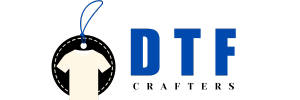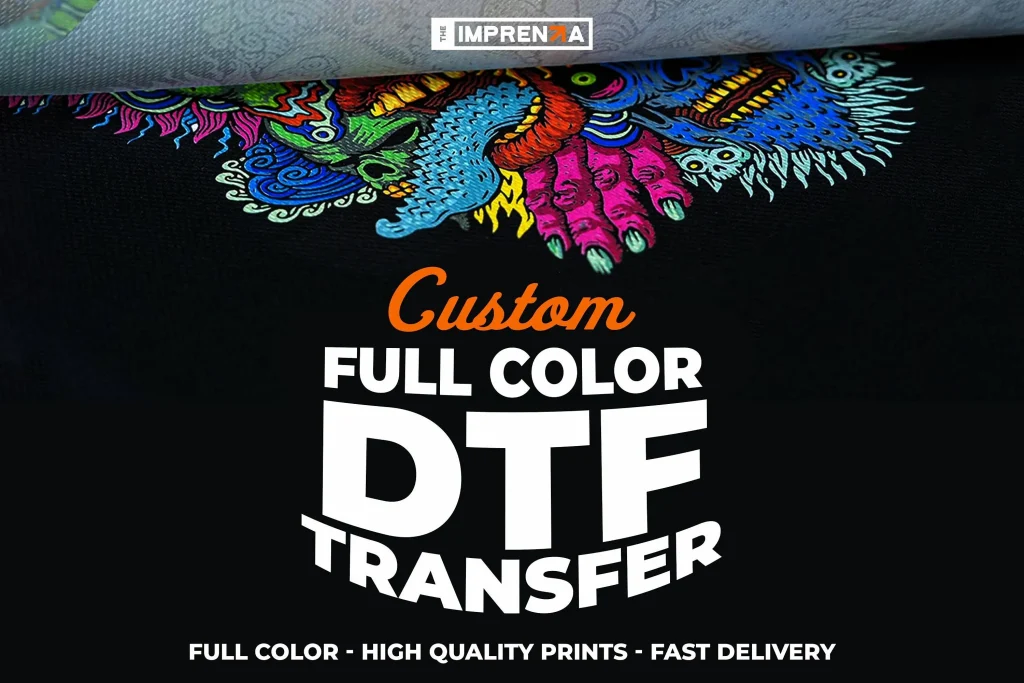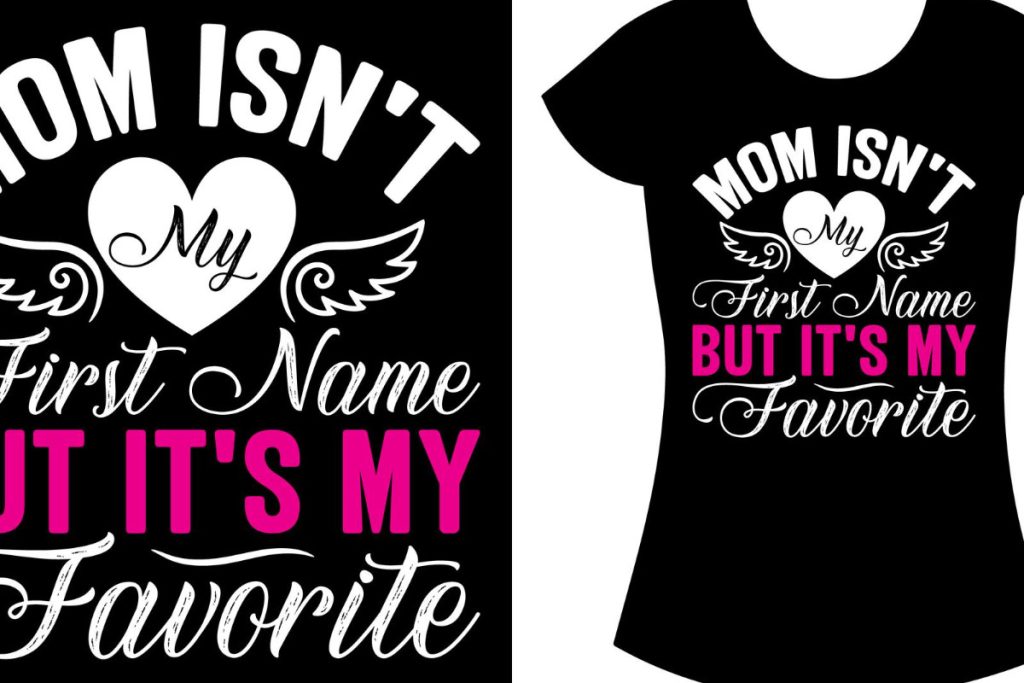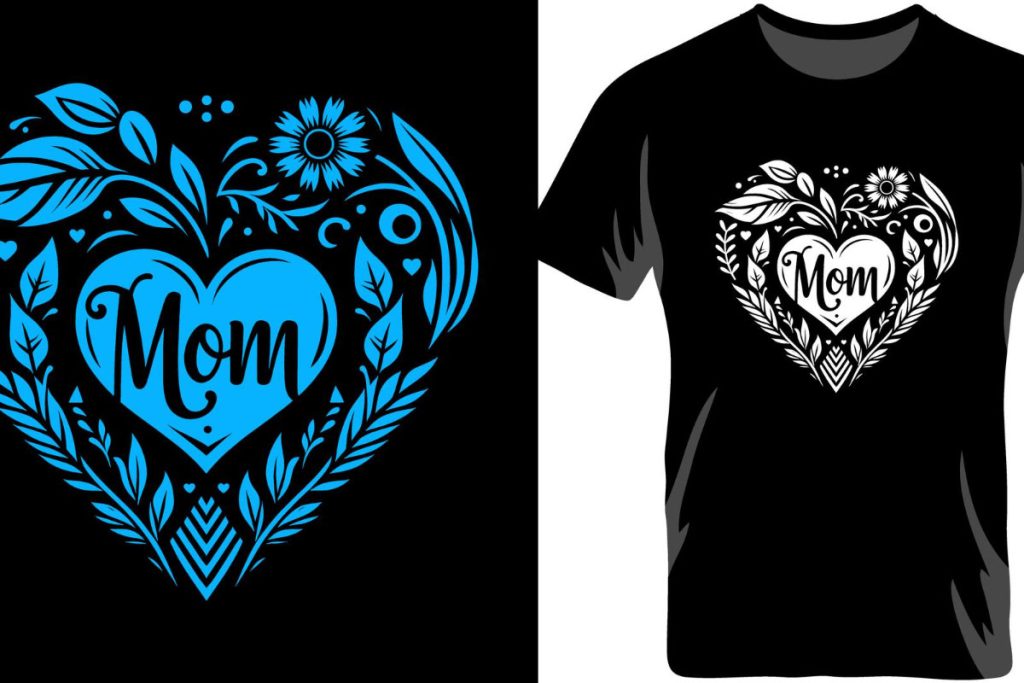DTF Transfers, or Direct-to-Film transfers, have emerged as a game-changer in the realm of custom apparel printing, offering a captivating way to produce vibrant prints that captivate audiences. This innovative printing process utilizes advanced technology to deliver intricate designs with a durability that outlasts many traditional methods. By combining eco-friendly inks and a streamlined application technique, DTF printing not only elevates artistic expression but also aligns with sustainability values. In this article, we will explore the DTF printing process, its many benefits, and tips for maximizing your projects. Discover how this versatile printing technique can help you create eye-catching apparel that stands the test of time.
Also known as Direct-to-Film printing, DTF transfers have transformed the landscape of custom printing for clothing and other fabric-based items. This method leverages specialized inks that are both vibrant and eco-conscious, ensuring designs not only pop with color but also align with environmentally friendly practices. The unique DTF printing process enables the transfer of detailed graphics onto various materials, resulting in high-quality and long-lasting prints. As businesses increasingly seek personalized solutions in apparel design, understanding the nuances of this technique is essential. From improving product durability to enhancing creative possibilities, the advantages of DTF printing are becoming undeniable.
The Advantages of DTF Transfers in Custom Apparel
DTF transfers offer an array of advantages that make them an ideal choice for custom apparel printing. Their ability to produce vibrant prints sets them apart from traditional methods. This technique utilizes water-based inks that yield rich colors and intricate details, ensuring that designs look striking and professional on any garment. Moreover, the eco-friendly nature of these inks aligns perfectly with sustainable fashion practices, making DTF transfers not only a great choice for quality but also for the environment.
Another significant advantage of DTF transfers is their versatility. This printing method is compatible with a wide range of fabric types including cotton, polyester, and even blended materials. As a result, businesses can cater to diverse customer needs without being limited to specific fabrics, which is often a restriction seen in other printing methods. DTF printing is quickly becoming a preferred option for brands looking to offer unique, standout products that captivate consumers.
Exploring the DTF Printing Process
The DTF printing process is an innovative blend of direct-to-garment and traditional heat transfer techniques. It begins with creating a digital design that is printed onto a specialized DTF film using high-quality inks. Once printed, the film is coated with a hot melt adhesive powder, which is essential for effective fabric transfer. This process not only provides vibrant prints but also ensures that even the most complex designs retain their detail and integrity when applied to clothing.
After the film has been prepared, it is then heated and pressed onto the desired fabric. The ideal temperature and pressure settings must be adhered to for optimal results. This precision is critical in achieving durable prints that won’t fade or crack over time. The DTF printing process represents a significant advancement in printing technology, allowing for the production of high-quality, long-lasting garments that are becoming increasingly popular in the apparel market.
Durability: Why DTF Prints Last Longer
Durability is one of the standout features of DTF prints, making them an attractive option for businesses that require long-lasting designs. Unlike traditional screen printing, which can fade and crack after repeated wash cycles, DTF prints are engineered to withstand wear and tear. Studies reveal that DTF prints can endure up to 50 washes while maintaining their vibrant colors and design integrity, making them perfect for everyday items like t-shirts and sweatshirts.
The advanced technology in DTF printing enhances the ink adhesion to various fabric types, ensuring that prints remain intact throughout their life. This not only reduces the need for replacements but also enhances customer satisfaction, as consumers appreciate durable products. With the industry moving towards sustainability, the longevity of DTF transfers can also significantly reduce waste, making them a responsible choice for eco-conscious businesses.
Equipment and Materials for Effective DTF Printing
To engage successfully in DTF printing, investing in the right equipment and materials is critical. The first essential piece of equipment is a DTF printer, which is specifically designed to produce high-quality prints on film. This printer uses advanced technology that allows for precise ink placement and vibrant output, crucial for creating eye-catching designs.
In addition to the printer, a reliable heat press is vital for transferring the designs from film to fabric. It’s important to choose a heat press with adjustable temperature settings to ensure proper adherence and quality of the final product. Furthermore, selecting high-quality DTF films and eco-friendly inks will enhance the overall quality and durability of the prints, contributing significantly to the success of the custom apparel printed.
Cost Efficiency and Sustainability of DTF Printing
When it comes to operational costs, DTF printing emerges as a highly efficient option for small to medium-sized businesses. Initiating DTF printing involves a lower initial investment compared to traditional methods such as screen printing. Businesses can start with basic equipment and scale their operations as needed, minimizing financial risk while exploring creative opportunities.
Additionally, DTF printing produces less waste than many other printing techniques, contributing to a more sustainable business model. This aspect of eco-friendliness is increasingly important in today’s market, which values environmentally conscious practices. By adopting DTF transfers, businesses can not only save on costs but also appeal to a growing consumer base that prioritizes sustainability.
Future Trends in DTF Printing and Custom Apparel
The future of DTF printing looks promising as it addresses the growing consumer demand for unique and personalized apparel. As more brands delve into customizations, the market for DTF transfers is expected to expand. This trend towards personalization allows businesses to cater to diverse consumer preferences, offering tailored designs that resonate with their audiences. The ability to produce small batches of unique pieces will be a significant advantage for brands looking to differentiate themselves in a competitive market.
Another exciting aspect of DTF printing is the emergence of community support and resources. Online forums, workshops, and training sessions dedicated to DTF technology are blossoming, empowering new users with the knowledge and skills needed to succeed. This trend indicates a strong interest in mastering DTF processes and furthering innovation within the industry. As businesses share best practices and tips, the quality of DTF printing is likely to improve exponentially, setting new standards in the custom apparel printing landscape.
Frequently Asked Questions
What are DTF transfers and how do they work?
DTF (Direct-to-Film) transfers involve printing designs onto a special film using eco-friendly water-based inks. These vibrant prints can then be heat-pressed onto various fabrics, combining intricate details and durability. The process includes printing, drying, applying an adhesive powder, and then using a heat press to transfer the design onto apparel.
Why should I choose DTF printing for custom apparel?
DTF printing is an excellent choice for custom apparel due to its ability to produce vibrant prints that maintain their quality over time. This method allows for detailed designs and uses eco-friendly inks, making it a sustainable option. Additionally, DTF transfers are known for their durability, allowing prints to withstand multiple washes without fading.
Are DTF transfers environmentally friendly?
Yes, DTF transfers use water-based inks that are considered eco-friendly compared to traditional solvent-based inks. This approach reduces environmental impact while still delivering vibrant colors and quality prints on custom apparel, aligning with sustainable printing practices.
How durable are prints made with DTF transfers?
Prints created with DTF transfers are highly durable and can endure up to 50 washing cycles without significant wear. The advanced adhesion technology used in DTF printing ensures that colors remain vibrant, making it ideal for everyday clothing such as t-shirts and hoodies.
What equipment do I need to start with DTF printing?
To begin DTF printing, you will need a specialized DTF printer, a quality heat press with adjustable settings, and compatible printable film and water-based inks. Having the right equipment is crucial for achieving the best results in your custom apparel printing projects.
What are the cost benefits of DTF printing compared to other methods?
DTF printing offers a cost-effective solution, especially for small to medium-sized businesses. It requires a lower initial investment than traditional screen printing, generating less waste and allowing for efficient small-batch production of custom designs, which can lead to savings in both material costs and labor.
| Key Point | Details |
|---|---|
| What are DTF Transfers? | Direct-to-Film (DTF) transfer printing involves printing designs onto a special film for application to fabrics using heat. |
| Printing Process | Creates a design on a computer, prints on DTF film, applies hot melt adhesive, then transfers to fabric. |
| Eco-Friendly Inks | Uses water-based inks that are vibrant and fade-resistant, adhering to environmental standards. |
| Durability | DTF prints endure up to 50 wash cycles without losing quality, making them ideal for everyday wear. |
| Necessary Equipment | Includes a DTF printer, heat press, and suitable films and inks for different fabric types. |
| Cost Efficiency | Lower initial investment compared to screen printing and generates less waste. |
| Industry Trends | Growing popularity for personalized apparel drives demand for DTF printing, supported by training resources. |
| Best Practices | Pre-treat fabrics, adjust heat settings, and use quality equipment for best results. |
Summary
DTF Transfers have emerged as a revolutionary method for creating vibrant and lasting prints, transforming the landscape of custom printing in the apparel industry. Leveraging advanced technology and eco-friendly inks, DTF printing not only offers exceptional detail and color vibrancy but also provides a durable solution that withstands the rigors of everyday use. As businesses seek ways to stand out in a competitive market, embracing DTF Transfers allows them to produce bespoke designs that resonate with a growing consumer desire for unique apparel. With best practices in place and the right equipment at hand, creating stunning prints has never been more attainable, enabling both small businesses and aspiring designers to thrive.



